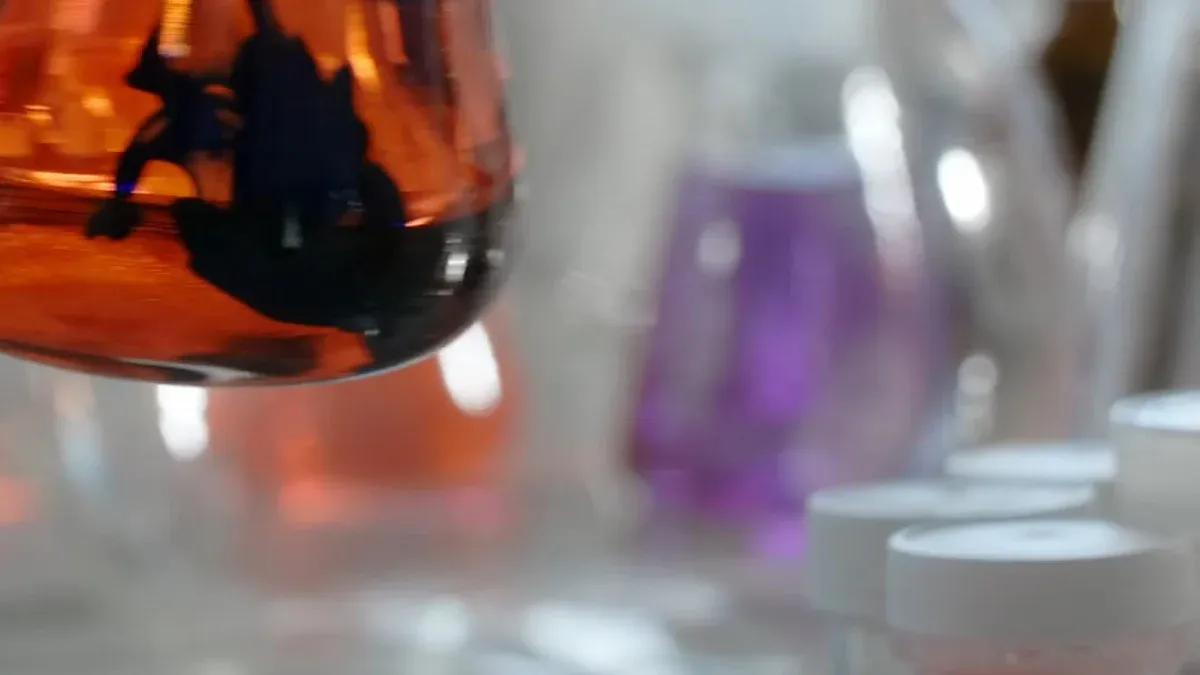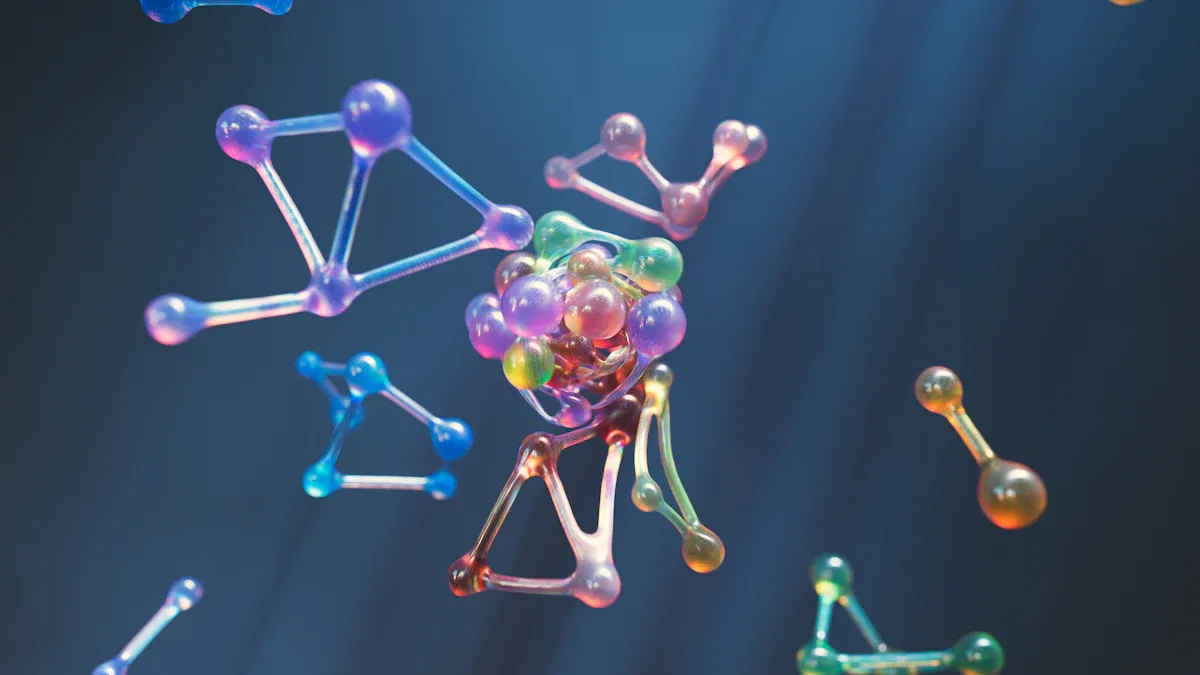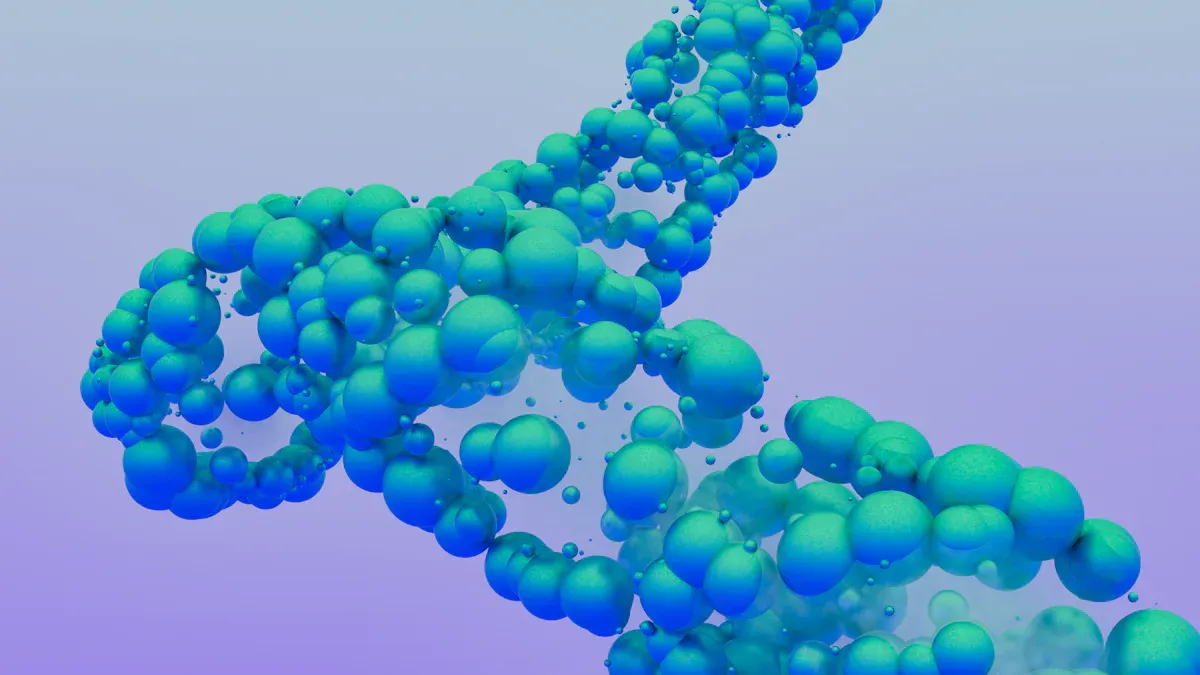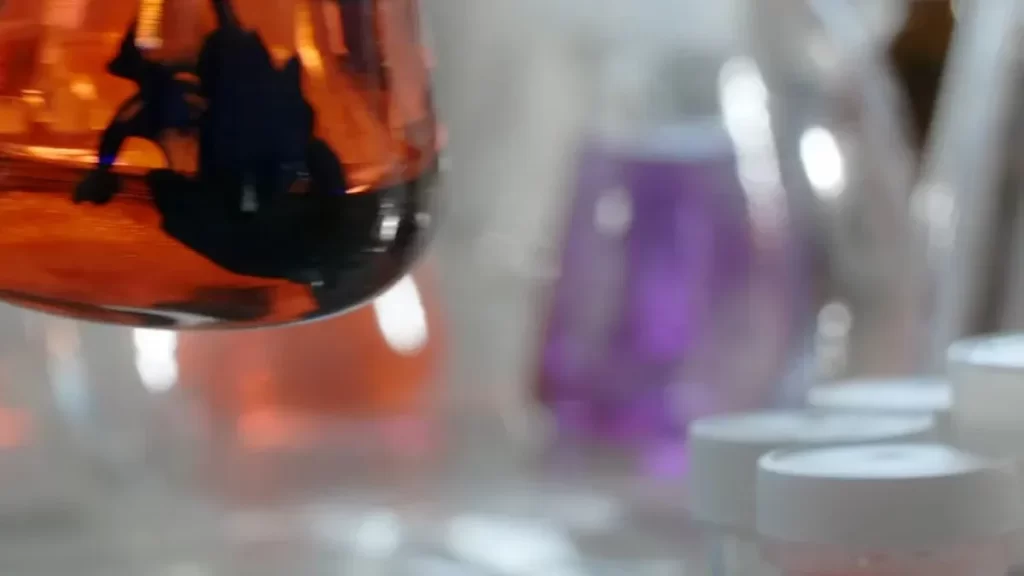News & Events
Step-by-Step Methods for Integrating BEAM Protein and MBP in Antibody Research

You often see mbp help increase protein production in research. When you use mbp, you notice better protein solubility and stability. Many scientists choose mbp because it boosts protein production levels. If you work with beam protein and mbp, you improve antibody workflows. You rely on mbp fusion to make your experiments smoother and more reliable.
Key Takeaways
- Using MBP as a fusion partner enhances protein solubility and stability, leading to higher yields in antibody research.
- Careful design of fusion constructs, including the position of MBP, is crucial for preventing protein aggregation and ensuring effective purification.
- Optimizing expression conditions in E. coli, such as temperature and inducer concentration, significantly improves the quality of recombinant proteins.
- Employing effective purification methods, like affinity chromatography with MBP, results in highly pure target proteins for reliable experimental outcomes.
- Maintaining antibody stability through optimized buffer systems and recombinant fusion proteins is essential for accurate detection in screening assays.
BEAM Protein and MBP Fusion

Construct Design
You start by designing your fusion proteins with careful planning. You select the beam protein and mbp as your main components. You place mbp at the N-terminus of your fusion. This position helps mbp fold first and shield the beam protein from aggregation. You use recombinant engineering to join the genes for mbp and beam protein in a single construct. You add a tag sequence to help with purification later. You choose a linker that keeps both proteins flexible and functional.
The study illustrates that fusing mbp to the N-terminus of aggregation-prone proteins enhances solubility and yield, as mbp must be folded to effectively bind and sequester the passenger protein, thus preventing aggregation.
You see that mbp works better than many other tags for improving solubility. Comparative studies show that mbp and NusA both help recombinant proteins stay soluble, but mbp often gives the best results. When you fuse aspartic proteases to the N-terminus of mbp, you get more soluble proteins. If you reverse the order, you see more inclusion bodies. You learn that the position of mbp in your fusion matters for protein production.
You face some challenges in construct design. You may see aggregation if you use low-pH elution steps. You can change your cell-culture and purification methods to fix this. Proteolytic degradation can happen at the junction between domains. You solve this by changing the sequence at the fusion point. Sometimes, new epitopes form and cause immunogenicity. You test for these to avoid hypersensitivity. You notice that fusion proteins often have lower expression titers than monoclonal antibodies. You adjust your engineering strategy to improve translation. Glycosylation can be incomplete or uneven, so you control sialylation levels. Chromatography can be tricky for large fusion proteins, so you try alternative polishing methods.
- Aggregation: Low-pH elution steps can induce aggregation, requiring modifications in cell-culture and purification processes.
- Proteolytic Degradation: This can be mitigated by altering the junction sequence between fusion protein domains.
- Immunogenicity: Novel epitopes may arise, necessitating assessment to avoid hypersensitivity.
- Low Expression Titers: Fusion proteins often have lower titers than monoclonal antibodies due to less efficient translation.
- Glycosylation Issues: Incomplete and heterogeneous glycosylation can lead to immunogenic responses, requiring careful control of sialylation levels.
- Chromatography Challenges: Protein A capture chromatography may have lower binding capacities for larger fusion proteins, necessitating alternative polishing methods.
Expression in E. coli
You use recombinant engineering to express your fusion proteins in E. coli. You pick a strain that supports high-level protein production. You optimize your induction conditions to get the best yield and solubility. You set the temperature between 15°C and 25°C. Lower temperatures help your proteins fold and reduce aggregation. You use a low inducer concentration to avoid clumping. You let the induction run for 16 to 20 hours at 18°C for better results. If you need a faster process, you can induce for 4 hours at 37°C, but you may see more aggregation.
| Parameter | Optimal Condition | Effect on Protein Expression |
|---|---|---|
| Temperature | 15°C to 25°C | Improves solubility and reduces aggregation |
| Inducer Concentration | Lower concentrations recommended | Prevents aggregation |
| Induction Time | 4 hr at 37°C, 16–20 hr at 18°C | Longer times needed at lower temperatures for sufficient yield |
You see that mbp helps your fusion proteins stay soluble during recombinant production. You notice that yields can reach up to 100 mg/L, but most often you get 10–40 mg/L. You use a tag to help with detection and purification. You find that mbp is one of the best solubility enhancers for recombinant proteins. You get more stable and functional proteins for antibody research.
Purification Steps
You purify your fusion proteins using the mbp tag. You use affinity chromatography with a resin that binds mbp. You wash away other proteins and elute your fusion proteins with maltose. You get highly pure tag-free target proteins after you remove the tag. You see that mbp helps your proteins fold correctly and stay soluble during purification. You use recombinant engineering to add a cleavage site between mbp and the beam protein. You use a protease to cut the tag after purification.
- Yields can reach up to 100 mg/L.
- Typical yields range from 10–40 mg/L.
- The purification process results in a highly pure tag-free target protein.
You use mbp as both a detection and purification tag. You see that mbp improves the yield and purity of your target proteins. You get more reliable results in your antibody research. You use recombinant fusion proteins with mbp to make your workflow smoother and more efficient.
The use of mbp as a fusion partner in purification techniques enhances solubility and assists in proper folding. You rely on mbp to improve the yield and purity of your target proteins. You see that mbp serves as a valuable tool in recombinant protein engineering for antibody development.
Immobilization Methods for Maltose-Binding Protein
Surface Preparation
You prepare your assay surface to immobilize mbp fusion proteins. Many researchers use a gelatinized starch–agarose mixture because it is cost-effective and easy to handle. You increase the surface area of starch by heating it, which boosts its binding capacity for mbp. You pour the melted starch–agarose mixture into a 96-well plate and let it solidify. After the surface sets, you overlay it with mbp fusion proteins. This method helps you achieve strong absorption and reliable immobilization of maltose-binding protein. You can also use amylose-agarose or dextrin-sepharose columns for mbp fusion proteins. These surfaces provide high purity and efficient binding. You may choose a maltodextrin-modified graphene oxide matrix for one-step purification and immobilization. This matrix gives you high loading capacity and improved stability for maltose-binding protein.
| Factor | Description |
|---|---|
| Ligand | DARPin off7 offers high specificity and affinity for mbp. |
| Matrix Type | off7-modified matrix is more efficient than amylose-based matrices. |
| Application | Works well with mbp fusion proteins like GFP and flavodoxin. |
| Matrix | Maltodextrin-modified graphene oxide supports high purity and activity. |
Binding Protocols
You follow validated protocols to bind mbp fusion proteins to your prepared surface. You use mbp as a fusion partner to help your target protein fold correctly and stay soluble. You can use a rapid, single-step protocol for purifying monomeric mbp fusion proteins. You optimize parameters like temperature and buffer composition to enhance the process. You may use computationally designed octapeptides to target mbp, which gives you high-affinity binding with nanomolar-level interactions. You isolate highly purified mbp target proteins using affinity purification. Amylose-agarose or dextrin-sepharose columns help you reach 70–90% purity in one step. You see that mbp fusion proteins bind efficiently to these surfaces, making your antibody assays more robust. You can use biotin-streptavidin interactions to immobilize mbp complexes, which allows you to rank kinetic parameters of multiple binders at once. This approach helps you identify sybodies with slow off-rates and improves your antibody screening workflow.
Tip: Using mbp fusion proteins in antibody assays gives you reliable immobilization and accurate detection. You get better results when you choose the right surface and protocol for maltose-binding protein.
Troubleshooting
You may face challenges when immobilizing mbp fusion proteins. If your protein is unstable, you might see breakdown products like mbp6. You avoid non-ionic detergents and limit lysozyme treatment to improve binding to the amylose column. You adjust the length of the polypeptide fused to mbp to boost binding affinity. You include glucose in the media to repress amylase expression, which can interfere with mbp binding. You harvest and lyse cells quickly to reduce fusion protein degradation. You use a host strain that lacks proteases and add a protease inhibitor cocktail during lysis. You monitor your samples with SDS-PAGE to check for degradation. If you see multiple bands, your fusion protein may be unstable. You solve non-specific binding by changing the column buffer. You add up to 1 M NaCl to weaken electrostatic interactions or lower the salt concentration and add 5% ethanol or acetonitrile to reduce hydrophobic interactions. If you have poor cleavage with TEV protease, you denature and refold the protein or add chaotropic reagents to expose the cleavage site. Adding amino acids to the N-terminus can also help.
Note: Troubleshooting mbp immobilization helps you maintain high purity and stability for maltose-binding protein fusion proteins. You get better antibody assay results when you address these common issues.
Antibody Screening and Stability

Assay Setup
You begin antibody screening by preparing your recombinant fusion proteins. You use beam protein and mbp fusion constructs to create a stable platform for your assays. You select recombinant E. coli strains that express your fusion proteins with high yield and solubility. You purify these fusion proteins using affinity chromatography, which relies on the mbp tag for efficient isolation.
To set up your assay, you immobilize the mbp fusion proteins on a suitable surface. You can use amylose-agarose or maltodextrin-modified matrices. These surfaces help you capture the recombinant fusion proteins and keep them stable during the screening process. You then add your antibody samples to the wells. The antibodies bind to the beam protein part of the fusion, allowing you to detect specific interactions.
You use a step-by-step approach for reliable results:
- Express recombinant fusion proteins containing beam protein and mbp.
- Purify the fusion proteins using mbp-based affinity chromatography.
- Immobilize the fusion proteins on a prepared surface.
- Add antibody samples to the wells.
- Wash away unbound antibodies.
- Detect bound antibodies using a labeled secondary antibody.
Tip: Using mbp fusion proteins in your screening assays increases protein solubility and stability, which leads to more accurate antibody detection.
Detection Techniques
You use several detection techniques to analyze antibody binding and stability. You often rely on colorimetric or fluorescence-based readouts to measure antibody interactions with the recombinant fusion proteins. You can use enzyme-linked immunosorbent assays (ELISA) for high-throughput screening. Fluorescence detection helps you monitor real-time binding events.
You must watch for common sources of error in detection. Sampling error can occur if you do not load the same amount of protein in each well. Artefacts may appear if your samples degrade or if you transfer proteins incorrectly. Non-discriminatory labeling can make it hard to tell which protein is which. Ghosting in densitometry analysis can lead to unreliable results. Degraded samples with smeared bands should not be used for quantitative comparisons. Detector saturation can affect the linearity of your data.
| Source of Error | Description |
|---|---|
| Sampling Error | Loading control proteins can increase resource use and error risk. |
| Artefacts | Degraded samples and transfer errors affect accuracy. |
| Non-discriminatory Labelling | Labeling all proteins can cause confusion in results. |
| Ghosting | Unreliable densitometry analysis due to ghosting bands. |
| Degraded Samples | Smearing or streaks make quantitative comparison invalid. |
| Detector Saturation | Non-linear data due to saturation must be addressed. |
You can reduce these errors by using fresh recombinant fusion proteins, checking sample quality, and calibrating your detection system. You also use controls to ensure your antibody screening results are valid.
Optimizing Antibody Stability
You focus on antibody stability throughout your screening and analysis. You use recombinant fusion proteins with mbp to keep your target proteins soluble and stable. Many studies show that mbp fusion proteins promote solubility and help maintain protein stability. For example, mbp keeps the PS2Aa1 fusion partner stable even after cleavage with Factor Xa. However, some fusion proteins lose stability when you remove mbp, so you often characterize them in the presence of mbp.
You use several methods to assess and improve antibody stability:
| Method | Description |
|---|---|
| SEC | Analyzes particle size and aggregation. |
| AUC | Determines sedimentation properties of proteins. |
| DLS | Measures size distribution in solution. |
| CD | Assesses protein conformation and stability. |
| FTIR | Identifies secondary structure elements. |
| HPLC-MS | Provides molecular characterization. |
| DSC | Measures thermal stability. |
| Fluorescence | Evaluates protein stability using fluorescence signals. |
You can also use these strategies to improve antibody stability:
- Sequence engineering to reduce hydrophobicity.
- Glycosylation pattern optimization.
- pH adjustment using formulation science.
Buffer systems play a key role in maintaining antibody stability. You often use histidine buffer with sucrose and polysorbate-80. You keep the pH between 5.5 and 6.0 for best results. Studies show that human serum filtrate, bovine serum filtrate, and artificial serum can also help maintain stability for up to 14 days.
| Buffer System | Stability Assessment Method | Duration of Study | Findings |
|---|---|---|---|
| Human Serum Filtrate | Light Obscuration | 14 days | Monitored stability of mAbs |
| Bovine Serum Filtrate | HP-SEC | 14 days | Monitored stability of mAbs |
| Artificial Serum | CE-SDS | 14 days | Monitored stability of mAbs |
| Histidine Buffer | Various | 14 days | Monitored stability of mAbs |
| Component | Description |
|---|---|
| Histidine | Common buffer component |
| Sucrose | Stabilizer |
| Polysorbate-80 | Surfactant |
| pH | Between 5.5 and 6.0 |
You see improved antibody stability when you use these optimized buffer systems and recombinant fusion proteins. You also notice that high-affinity antibodies, such as those with an affinity constant of 2.6 × 10^9 L/mol for IFN-γ, show strong and stable binding in your assays.
Note: You achieve improved antibody stability by combining recombinant fusion protein technology, optimized buffer systems, and careful assay design. This approach helps you get reliable results in your antibody research.
Data Analysis for Antibody Research
Quantitative Methods
You analyze your antibody screening results using clear and reliable methods. You start by measuring how well your fusion proteins bind to antibodies. You use ELISA or fluorescence assays to get numbers for each sample. You compare the amount of antibody bound to your recombinant fusion protein in each well. You repeat your tests to check for consistency. You use controls to make sure your fusion protein and antibody reactions are real.
You use several approaches to validate your results:
- The Human Protein Atlas project compares antibody staining with bioinformatic data. You look for matching patterns.
- The Human Cell Differentiation Molecules group uses blinded sharing and multicolor flow cytometry. You define cell populations with strong evidence.
- YCharOS uses CRISPR-Cas9 knockout lines for isogenic controls. You compare antibodies head-to-head and check quality control rates.
You use these methods to confirm that your recombinant fusion protein assays give reproducible and accurate results.
High-Affinity Antibody Identification
You identify high-affinity antibodies by looking at how tightly they bind to your fusion proteins. You measure the affinity constant (KD) for each antibody. Lower KD values mean stronger binding. You use special binding modes, like the headlock binding mode, to get better results. You see that backbone hydrogen bonds and salt bridges help increase affinity.
| Binding Mechanism | Affinity (KD) | Observations |
|---|---|---|
| Headlock binding mode | ~1.4 nM | Many backbone hydrogen bonds and a salt bridge boost affinity. |
| Headlock-mutated BC2-Nbs | ~10-fold reduced | Higher off-rates show the headlock is important for binding stability. |
You use these criteria to select the best antibodies for your recombinant fusion protein assays. You focus on antibodies that stay bound to your fusion protein for longer times.
Documentation
You keep careful records of your antibody research. You write down every step of your recombinant fusion protein experiments. You record the conditions, results, and any problems you see. You use tables and charts to show your data. You include details about your fusion protein constructs, antibody sources, and assay methods.
Tip: Good documentation helps you repeat your experiments and share your findings with others. You make your antibody research more reliable by keeping clear notes.
You follow best practices for reporting. You use standard formats for tables and figures. You check your data for errors before you publish or share it.
You gain stronger antibody workflows when you combine BEAM protein and MBP fusion systems. MBP helps you produce proteins with better solubility and stability. You see higher yields and more reliable results in your experiments. To maximize your success, try these tips:
- Optimize growth and induction conditions for your cultures.
- Use MBP as a fusion partner to boost solubility.
- Apply combinatorial-tagging methods for flexible purification.
You can adapt these strategies for many antibody research projects. This approach helps you achieve consistent and accurate results.
FAQ
What is the main benefit of using MBP in antibody research?
You get better protein solubility and stability with MBP. Many scientists report higher yields when they use MBP fusion proteins. Studies show MBP helps prevent aggregation, making your experiments more reliable.
How do you remove the MBP tag after purification?
You use a specific protease, such as TEV or Factor Xa, to cut the MBP tag from your fusion protein. This step gives you a pure target protein for your antibody assays.
Can you use MBP fusion proteins for high-throughput screening?
Yes, you can. MBP fusion proteins work well in ELISA and fluorescence assays. You can screen many antibodies quickly and get accurate results because MBP keeps your proteins stable.
What surfaces work best for immobilizing MBP fusion proteins?
You can use amylose-agarose, dextrin-sepharose, or maltodextrin-modified graphene oxide. These surfaces bind MBP fusion proteins strongly. Researchers often choose amylose-agarose for cost and ease of use.
How do you check antibody stability during your experiments?
You use methods like SEC, DLS, and fluorescence. These tests help you see if your antibodies stay stable. You also use buffer systems with histidine, sucrose, and polysorbate-80 to keep your antibodies in good condition.

